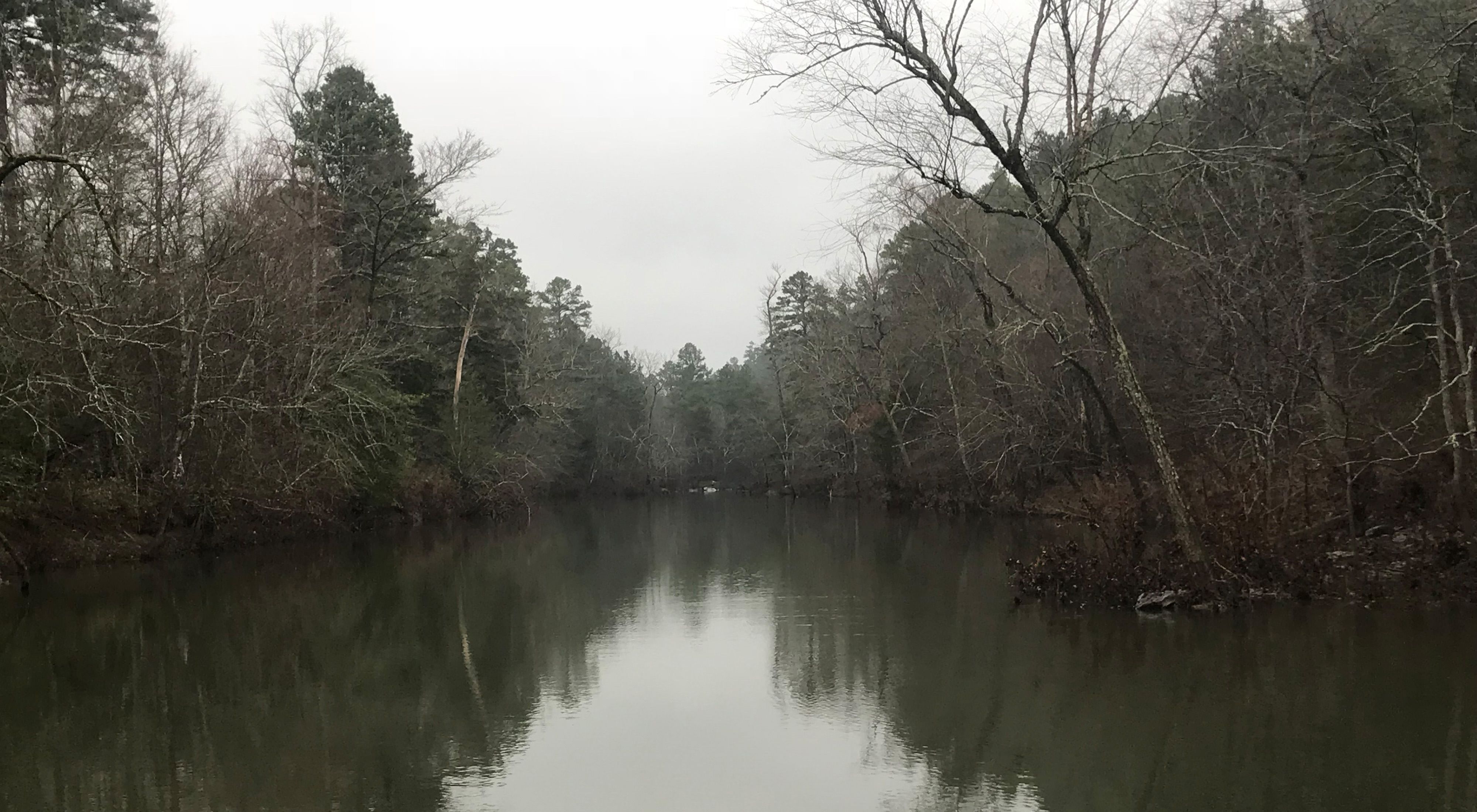Ouachita Mountain waters are centers of biological diversity and vital resources for drinking, agriculture and tourism.
Ecological Significance
An impressive suite of rare and imperiled animals thrives in beautiful Ouachita Mountain rivers, streams, lakes and aquifers that millions of people use each year for drinking, agriculture and recreation. Twenty-three aquatic animals in the Ouachitas, including 12 crayfish, eight fish, and three mussels, are found nowhere else on Earth.
Threats
Scientific studies have shown that a variety of land uses, when managed poorly, threaten the health of Ouachita Mountain waters. Urban development, incompatible forestry practices, in-stream gravel mining, unpaved roads, municipal and industrial wastewater, and intensive livestock grazing in and near streams have the potential to harm water quality. Several of these activities can cause excessive sedimentation, which has been pinpointed as a major threat to Arkansas’ most pristine streams. Altered water flows caused by the construction of dams, increased water withdrawals and water diversion have also degraded conditions in Ouachita streams.
What We've Done
The Nature Conservancy began its work on Ouachita rivers in the 1980s, when it helped the& U.S. Forest Service purchase the Albert Pike area along the upper Little Missouri River. In 1987, the Conservancy helped create the Cossatot River State Park-Natural Area by purchasing and transferring 4,400 acres to Arkansas State Parks and the Arkansas Natural Heritage Commission. And in 1996, the Conservancy facilitated a land exchange between Weyerhaeuser Company and the U.S. Forest Service that brought more than 180,000 acres into conservation management at no cost to taxpayers. In Arkansas, the exchange added to the protection of the upper Missouri, upper Saline and Cossatot rivers.
Over the past few years, the Conservancy has focused on the upper Saline River. The Saline River is a true gem of central Arkansas, known among naturalists for its wealth of fish and mussels and increasingly known by recreationists as a hot spot for canoeing, kayaking and fishing. In 2005, the Arkansas Natural Resources Commission tasked the Conservancy with analyzing land-use practices, describing the biggest threats to the upper Saline River, and suggesting appropriate restoration activities. In 2009, with funding from the U.S. Fish and Wildlife Service, the Conservancy launched the first restoration: stabilizing a 2,600-foot section of stream bank that had been shedding some 1,770 tons of soil per year into the Middle Fork Saline River. The team changed the slope of the bank, constructed in-stream rock structures to redirect water flow away from eroding banks, planted thousands of soil-stabilizing trees on 30 streamside acres, and built ponds to keep cattle out of the river.
Thanks to the Southeast Aquatic Resources Partnership, the Conservancy is restoring fish passage on a tributary to the Middle Fork Saline River, where a stream crossing that hampers fish movement will be replaced with an open-arch bridge that allows for more natural water flow while still supporting the large vehicles essential to the area’s timber industry.
The Conservancy is also advancing conservation on the Caddo and Ouachita rivers, launching stream and riparian restorations and improving off-highway vehicle trails to reduce erosion. Our work to conserve the beautiful waters of the Ouachitas will continue for years to come.
